Post-pandemic, the consumer’s priority purchases are grocery, nesting, and health, according to David Shah, a leading thinker about social and design trends.
 David presented the latest Pantone forecast on color and society in NewTopia – A Balance of Color Opposites – Color for a Post-COVID World this week. I had the opportunity to attend the session, and want to share the health and wellness-related insights David shared in his fast-paced view on the role of color in bolstering wellbeing and community looking out to 2022/23.
David presented the latest Pantone forecast on color and society in NewTopia – A Balance of Color Opposites – Color for a Post-COVID World this week. I had the opportunity to attend the session, and want to share the health and wellness-related insights David shared in his fast-paced view on the role of color in bolstering wellbeing and community looking out to 2022/23.
For context, Pantone plays a role in your life you might not realize. In health care, we turn to ANSI health data standards like HL7 and FHIR for data interoperability, and DICOM for moving medical images from place to place.
In the design of “things,” from fashion to refrigerators, cars and home furnishings, Pantone is the guru of color in creating standards via their iconic Pantone swatches you might have seen. (See an iconic one at the end of the post, below).
In the “NewTopia” for later next year into 2023, David presented a portfolio of color-palettes rooted in themes like foundation, heart, embryo, earthed, supernatural, and wake-up, among others.
Foundation, for example, has several micro-themes embodied in its color group like dreaming, resting, and writing. This theme brings together greys and light blues and creams and black and a bolt of yellow for some energy in the “writing” flow. The overall point is rest, relaxation, peace, and a dose of knowledge.
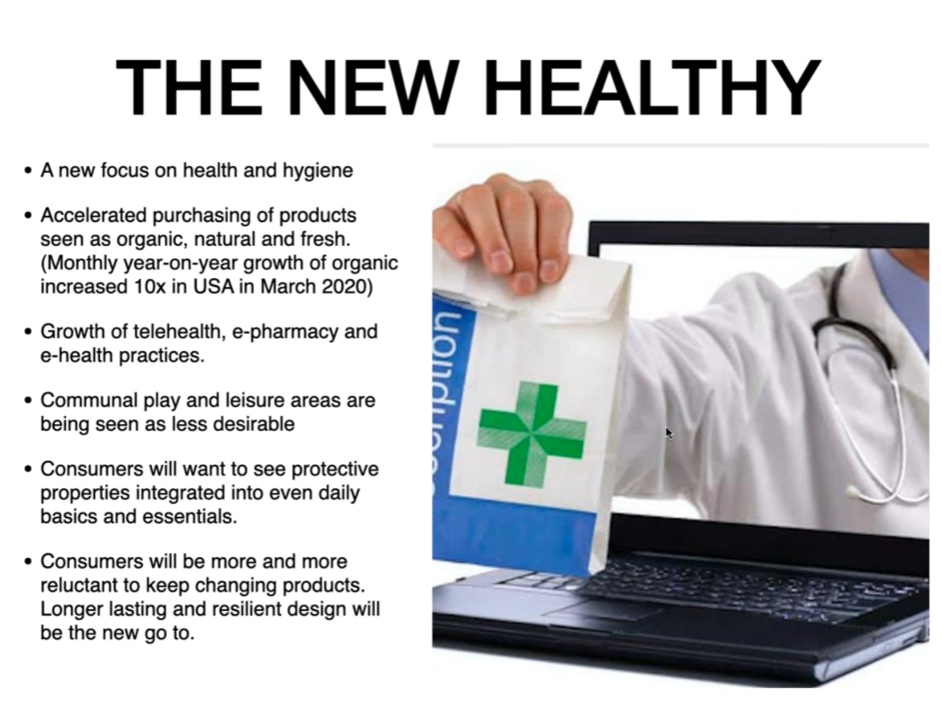 The New Healthy is a key pillar in NewTopia, shown in detail in the second graphic. Here’s a focus on health and hygiene, with more consumers in 2020 and going forward spending out-of-pocket cash for organic products, stuff boosting immunity, and a nod to resilient design and sustainability. Note that David — a fashion and style maven — talks about the adoption of telehealth and e-health in The New Healthy as part of this message.
The New Healthy is a key pillar in NewTopia, shown in detail in the second graphic. Here’s a focus on health and hygiene, with more consumers in 2020 and going forward spending out-of-pocket cash for organic products, stuff boosting immunity, and a nod to resilient design and sustainability. Note that David — a fashion and style maven — talks about the adoption of telehealth and e-health in The New Healthy as part of this message.
Some examples to expect going forward are:
- In hospitality, virus-scrubbed air in hotels and cruise shifts with state-of-the-art filtration systems
- The “vaxinista” theme appearing on clothes and accessories, combining “fashionista” and “vaccine” to show off one’s commitment to public health on social media and in selfies
- Mask-wearing as a fashion accessory, with icons like Tilda Swinton and Lady Gaga showing off their artfully designed facial coverings
- The “Xupermask” made of silicon and athletic mesh fabric, a joint venture of Will.i.am and Honeywell, which goes beyond “just” masking adding in tools like earbuds and power packs.
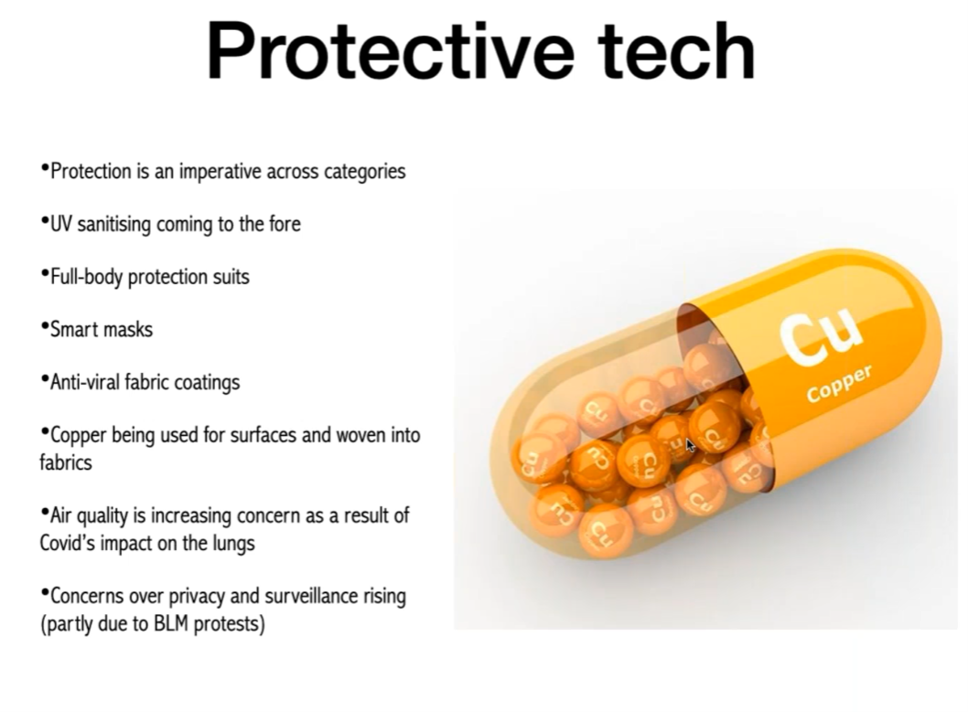 So protective tech continues in the endemic period post-pandemic. The third graphic talks about the concept, as David noted that “protection is an imperative across categories.”
So protective tech continues in the endemic period post-pandemic. The third graphic talks about the concept, as David noted that “protection is an imperative across categories.”
This speaks to every consumer goods company not only being a “tech company” which we talked about pre-pandemic, but now every organization can and most should be thinking as a “health company.” In this trend, we can re-visit the key finding in the 2010 Edelman Health Engagement Barometer noting that most consumers looked to all industries to engage with for health….learned back eleven years ago, just following the Great Recession of 2008.
We can look to cars, such as the Chinese-designed and manufactured Geely, re-thinking a vehicle that can fend off pathogens and viruses. This model received 30,000 pre-orders, David said, before its launch.
As we look to boost our individual well-being, health citizens in certain nations also want to be their brothers’ and sisters’ keeper.
David noted that some of the places that coped best dealing with the coronavirus, like the Nordic countries and New Zealand, had “widespread faith in institutions and strangers.”
This kind of health citizenship varies by country, but going forward younger people, David asserted, have become more committed to activism and social justice, looking for connection and sustainability in the aftermath of the pandemic. This is the vanguard consumer pressuring brands and companies to act on environmental and social issues.
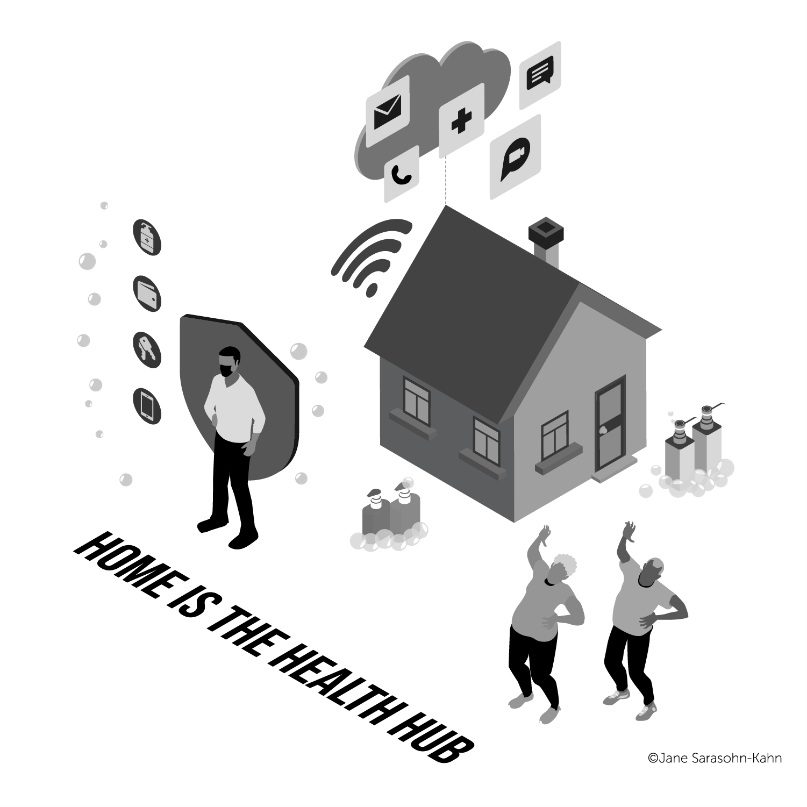 Health Populi’s Hot Points: With our homes evolving into our health/care hubs, every consumer goods company will find itself in the health and wellness business.
Health Populi’s Hot Points: With our homes evolving into our health/care hubs, every consumer goods company will find itself in the health and wellness business.
So , too, do traditional legacy medical and healthcare companies and organizations that have long-served “patients.”
The pandemic has accelerated patients’ path to healthcare consumers and, ultimately, the role of engaging as health citizens. Wearing masks for self and fellow community members, staying home to stem the spread of the coronavirus, returning to work safely, getting vaccinated….these are some of the signals we’ve seen as more people take on public health decisions through a mindful and community-focused lens.
While David Shah is a leading voice in design, he also gets the growing role of his wheelhouse for peoples’ well-being and health — physical, mental, behavioral, and social.
Thanks to PANTONE for adding to our understanding of how we can more effectively make health for ourselves, our fellow health citizens, and global wellness.
And here’s a little Fri-yay weekend gift for you — a sidebar for pop culture people. In the movie The Devil Wears Prada, remember the scene where Meryl Streep as Miranda Priestly, the terrifying editor of Runway magazine, waxes lyrically in a lecture about the color “blue” to Anne Hathaway’s right-hand assistance, noting her “lumpy blue sweater” was actually a “blue (that) represents millions of dollars….and you’re wearing a sweater that was selected for you by the people in this room from a pile of stuff.”
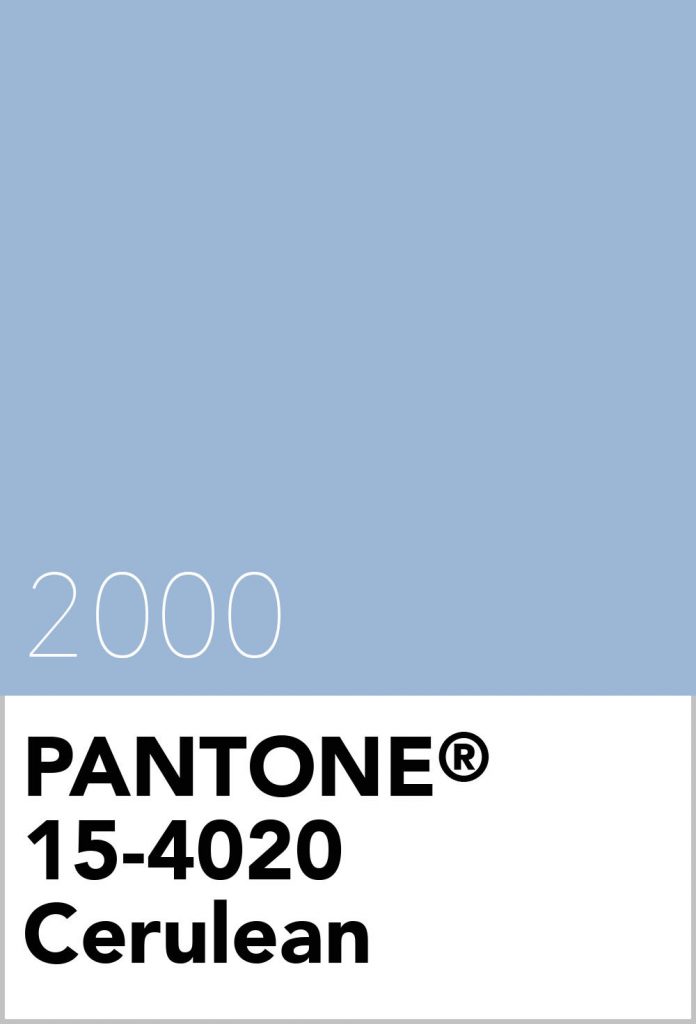
And to put a fine point on this, Pantone chose Cerulean Blue as Color of the Year in 2000.


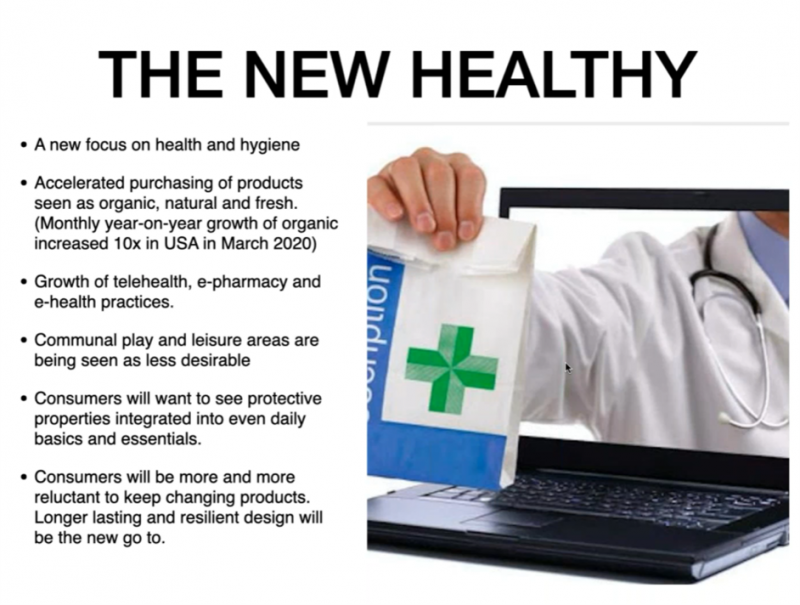


 Interviewed live on BNN Bloomberg (Canada) on the market for GLP-1 drugs for weight loss and their impact on both the health care system and consumer goods and services -- notably, food, nutrition, retail health, gyms, and other sectors.
Interviewed live on BNN Bloomberg (Canada) on the market for GLP-1 drugs for weight loss and their impact on both the health care system and consumer goods and services -- notably, food, nutrition, retail health, gyms, and other sectors. Thank you, Feedspot, for
Thank you, Feedspot, for  As you may know, I have been splitting work- and living-time between the U.S. and the E.U., most recently living in and working from Brussels. In the month of September 2024, I'll be splitting time between London and other parts of the U.K., and Italy where I'll be working with clients on consumer health, self-care and home care focused on food-as-medicine, digital health, business and scenario planning for the future...
As you may know, I have been splitting work- and living-time between the U.S. and the E.U., most recently living in and working from Brussels. In the month of September 2024, I'll be splitting time between London and other parts of the U.K., and Italy where I'll be working with clients on consumer health, self-care and home care focused on food-as-medicine, digital health, business and scenario planning for the future...